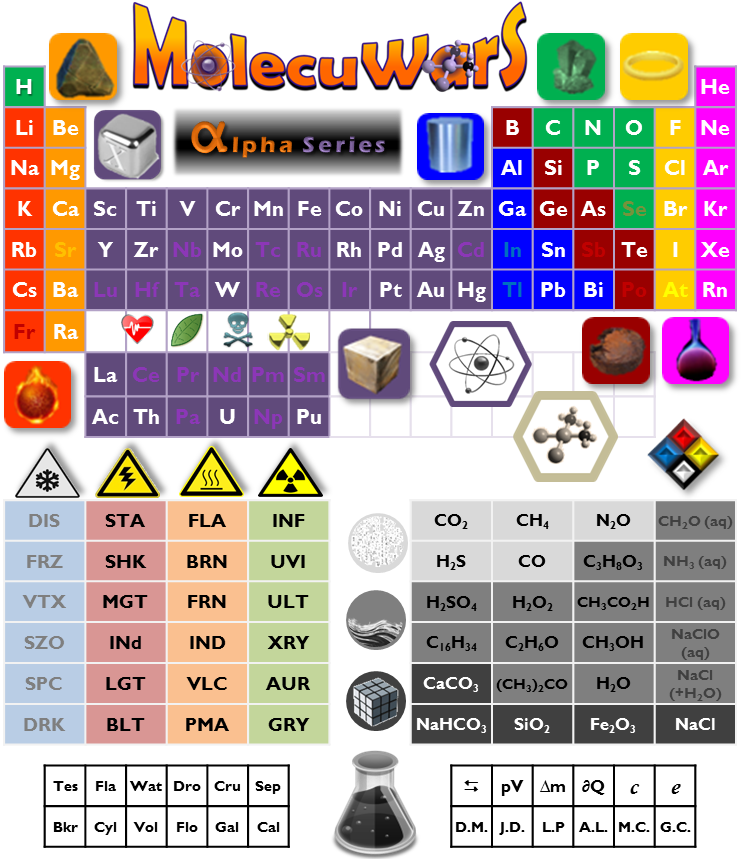MolecuWars™ cards are of four types: Atomicals™, Chemicals, Energies, and Labs.
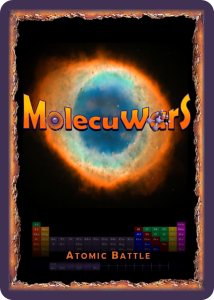
Each Atomical represents one of the atoms shown in the Periodic Table of Elements, grouped into families. 
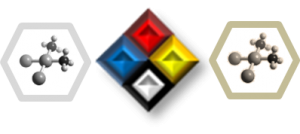 Each Chemical represents a chemical compound or solution that can partner with an Atomical to improve attacking or defending strength.
Each Chemical represents a chemical compound or solution that can partner with an Atomical to improve attacking or defending strength.
Each Lab shows specialty chemistry equipment, fundamental scientific principles, or the discoveries of famous chemists. Energy in the forms of Radiation, Heat, and Electricity can defeat each other or be defeated by Entropy. 
Powers of each Atomical are shown on the card. Chemical cards have similar layouts and show the enhancing powers they give when partnered with Atomicals:
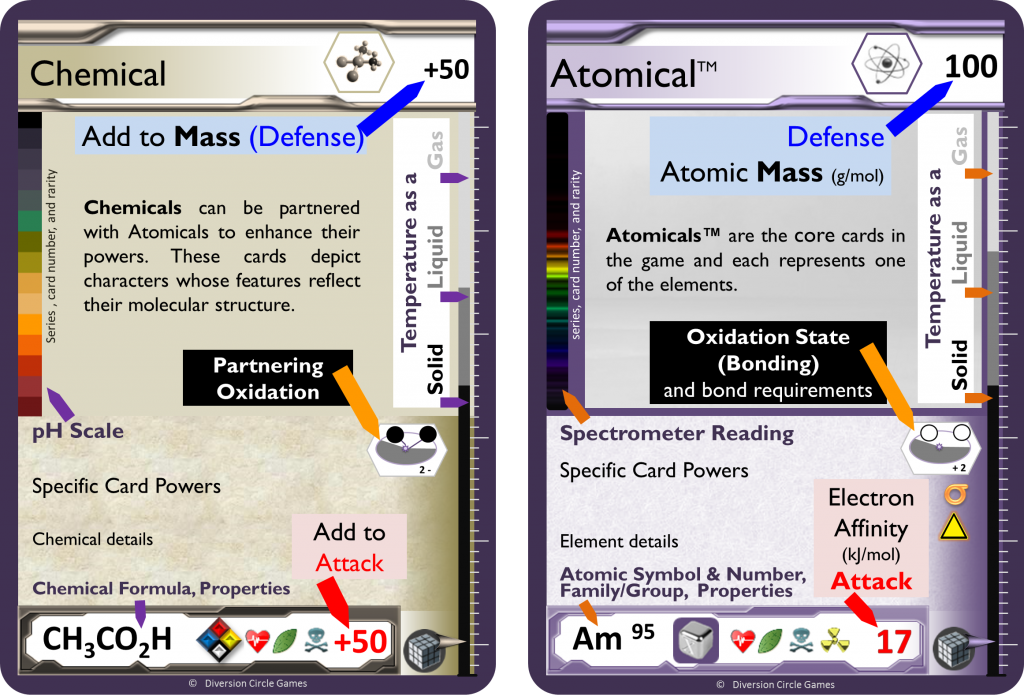
Atomicals™ are the core cards in the game and each represent on one of the elements. They are sub-divided into nine families of elements:
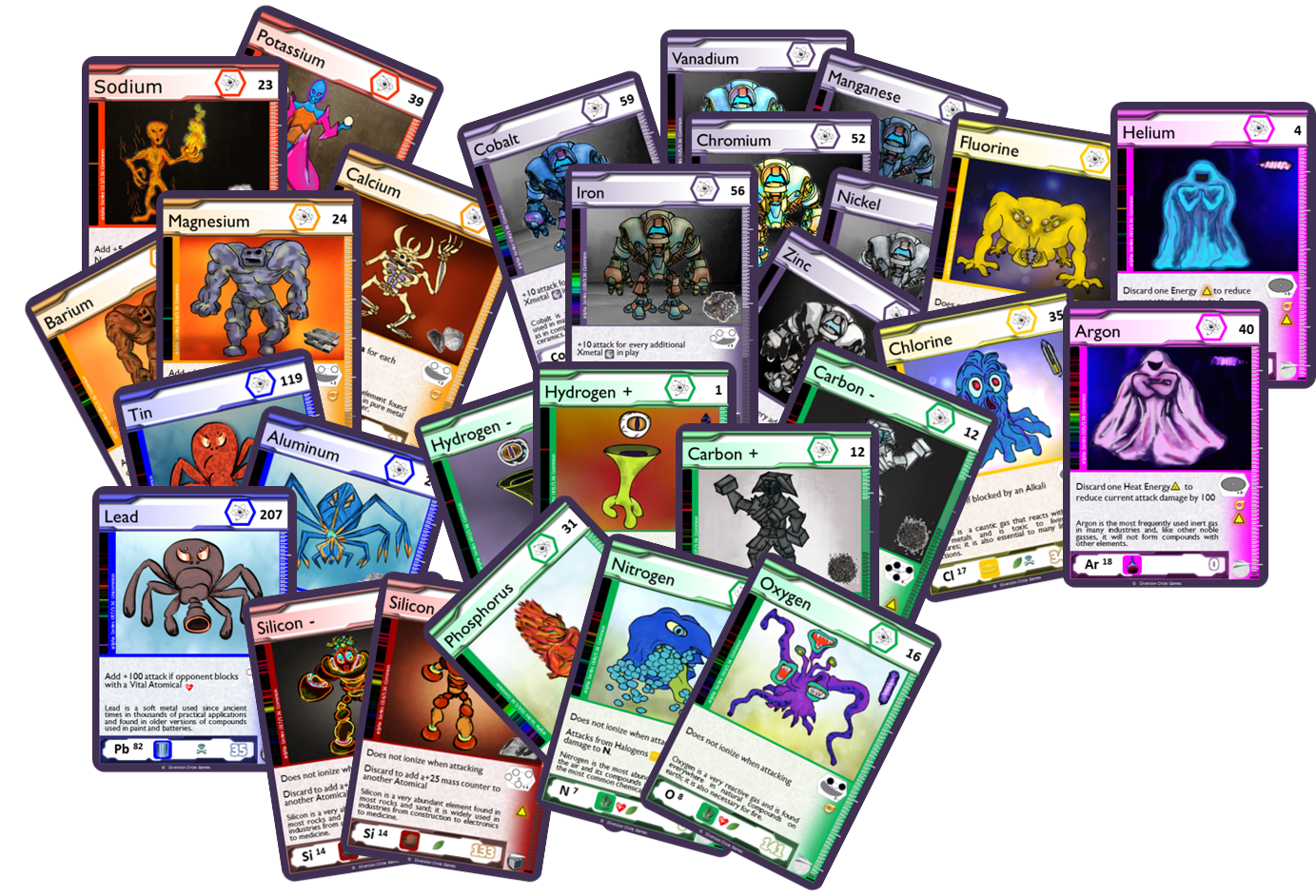

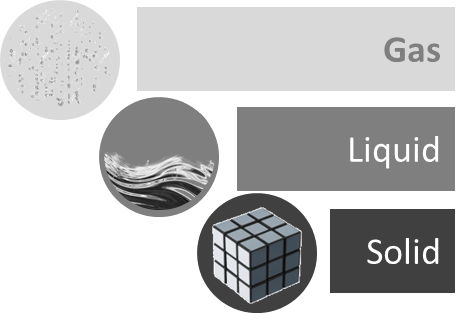
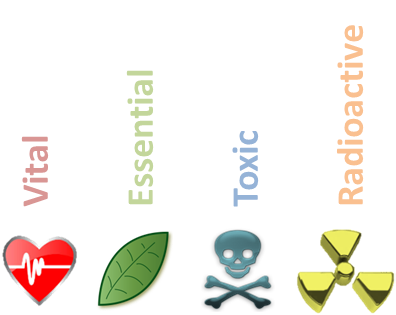
Atomicals and Chemicals have their states of matter at room temperature and their general chemical traits shown. These can all be affected by instructions on other cards in play.
Chemical cards show compounds and solutions that are grouped into solids, liquids, and gases. Chemicals can be partnered with Atomicals to enhance their powers. These cards depict new characters whose features reflect their molecular structure.
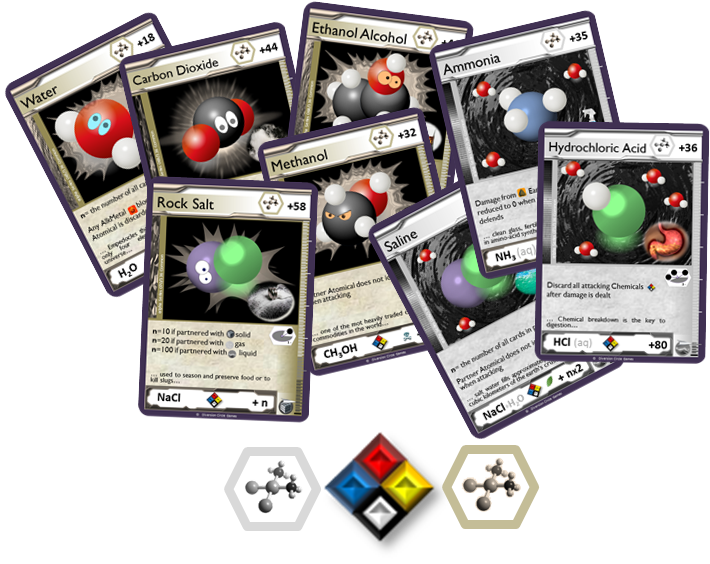
Energy cards are required by some Atomicals to make bonds; they are also used to attack and enhance Atomicals. Energy cards play against each other: Radiation defeats Heat; Heat defeats Electricity; and Electricity defeats Radiation. Entropy can defeat all other energies and some other cards.
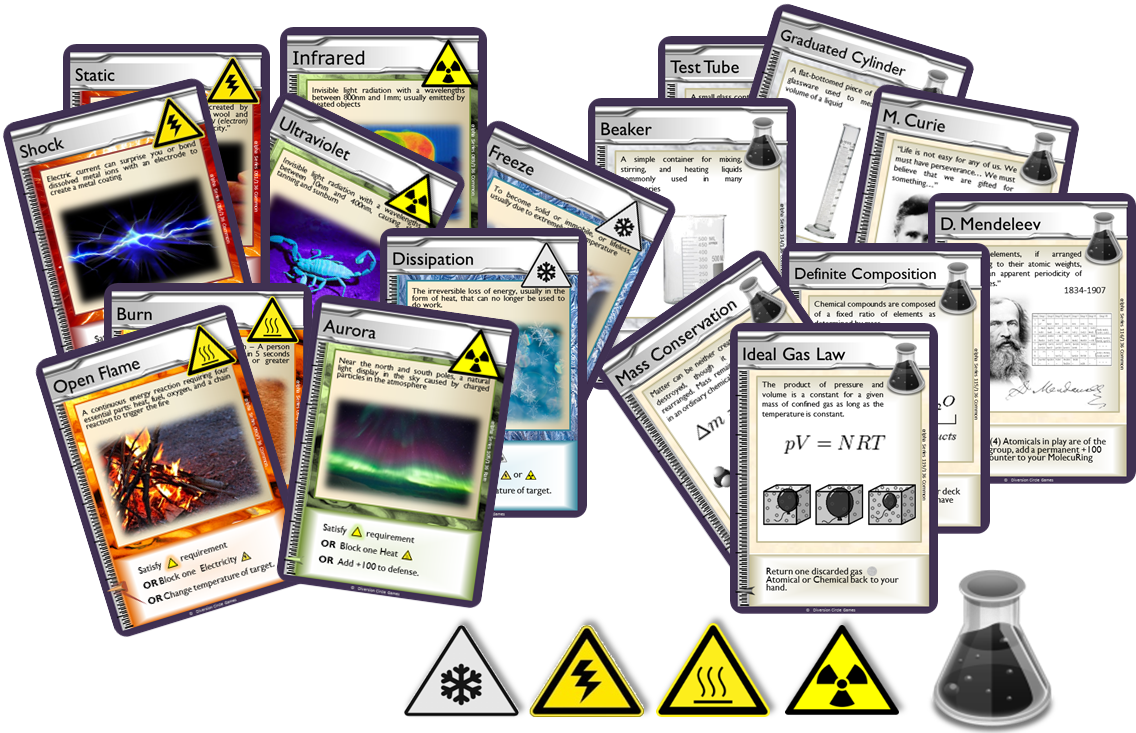
Lab cards affect most other cards in play and change the game. They include laboratory tools and equipment, fundamental scientific principles and laws, and the discoveries of famous chemists and scientists.
The Alpha Series has 136 unique cards. Most cards are common, some are uncommon, and others are rare; their frequencies are based on how often they are found in nature and in our everyday lives.
